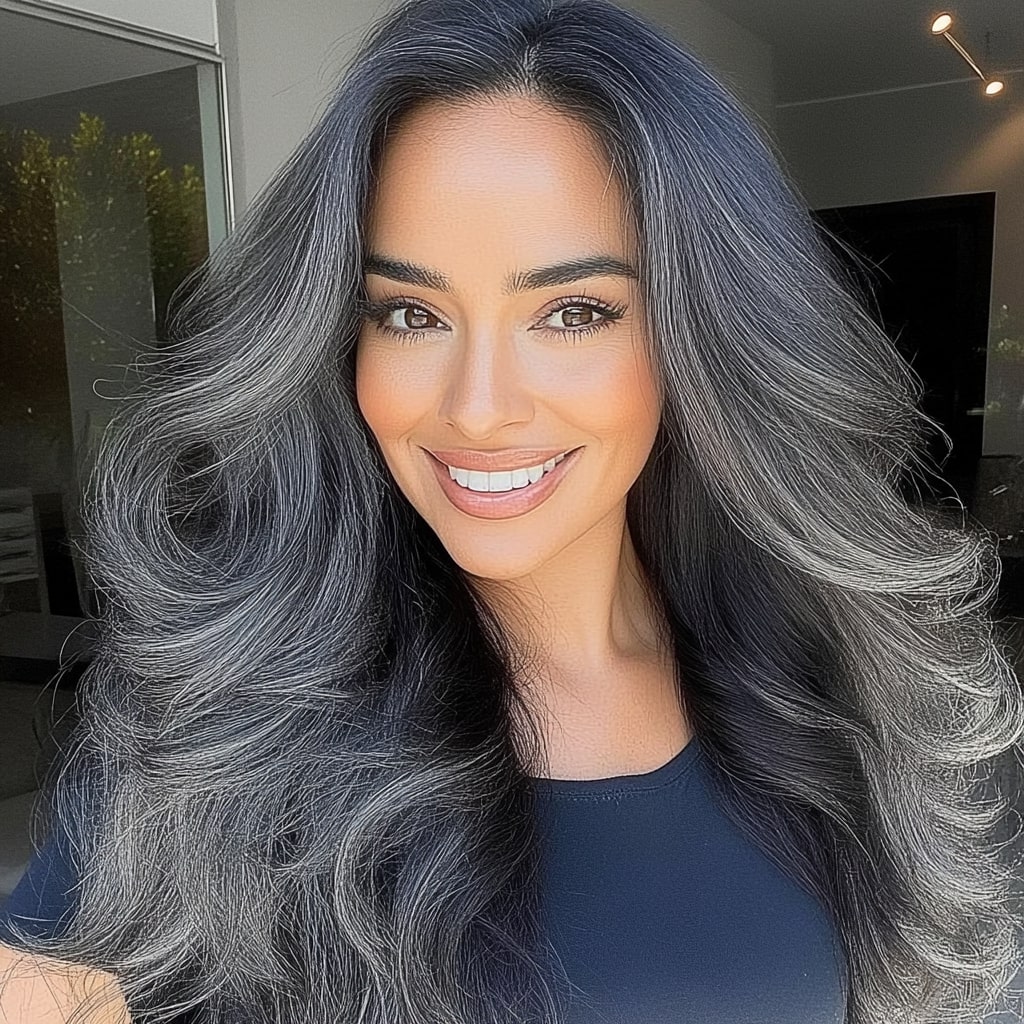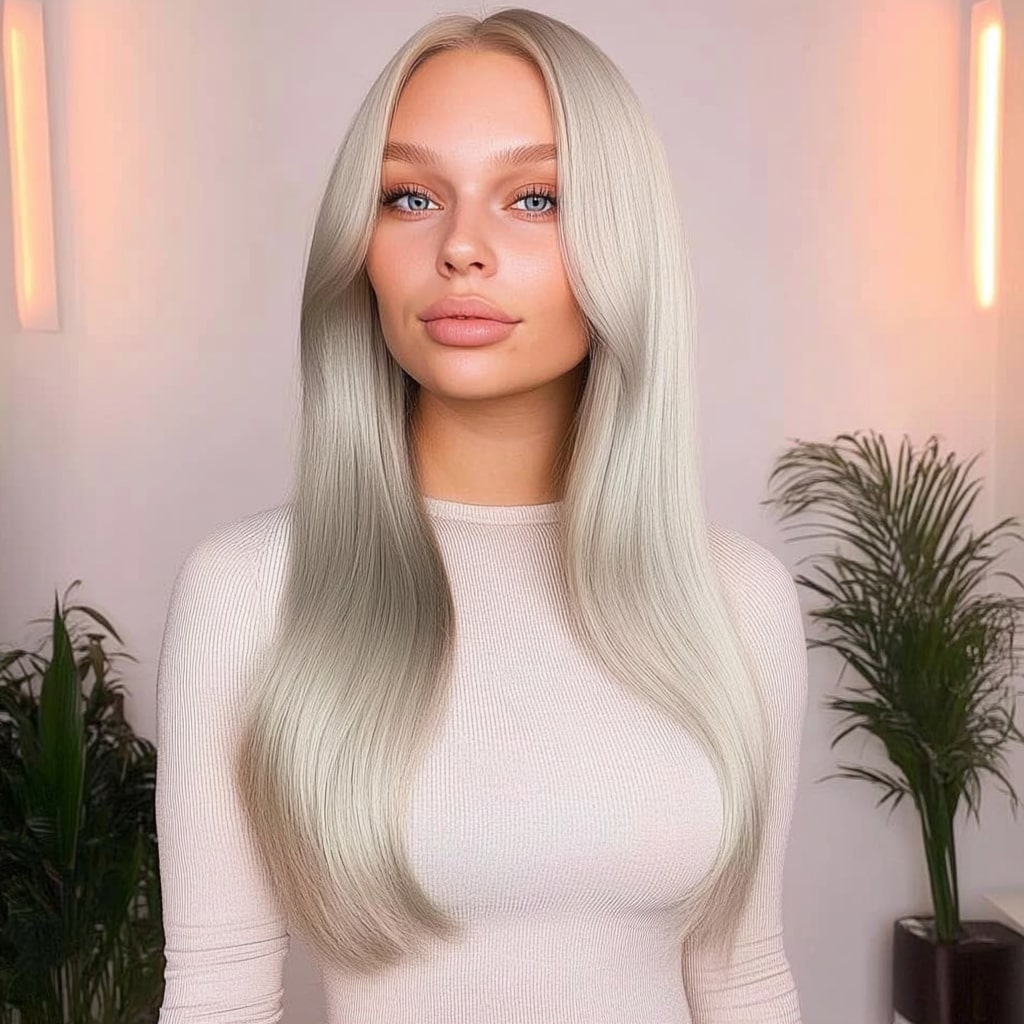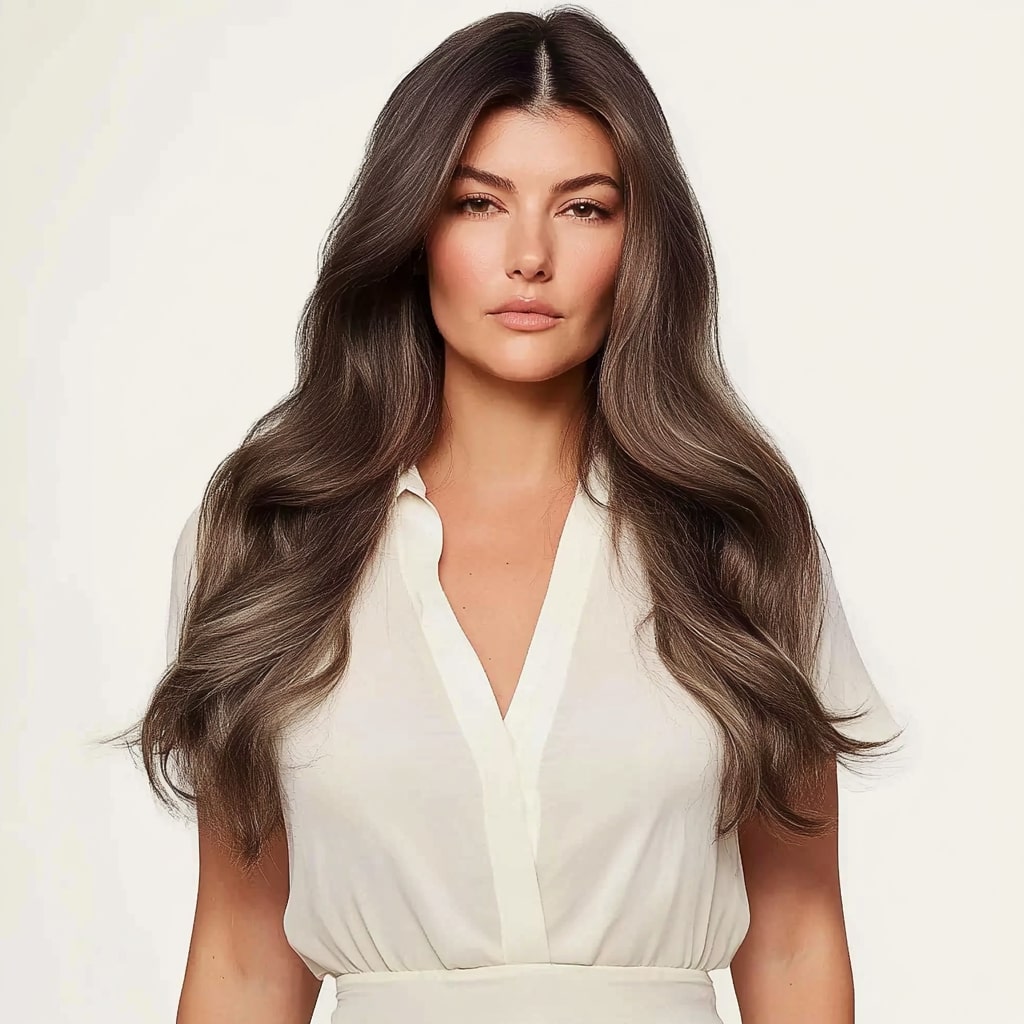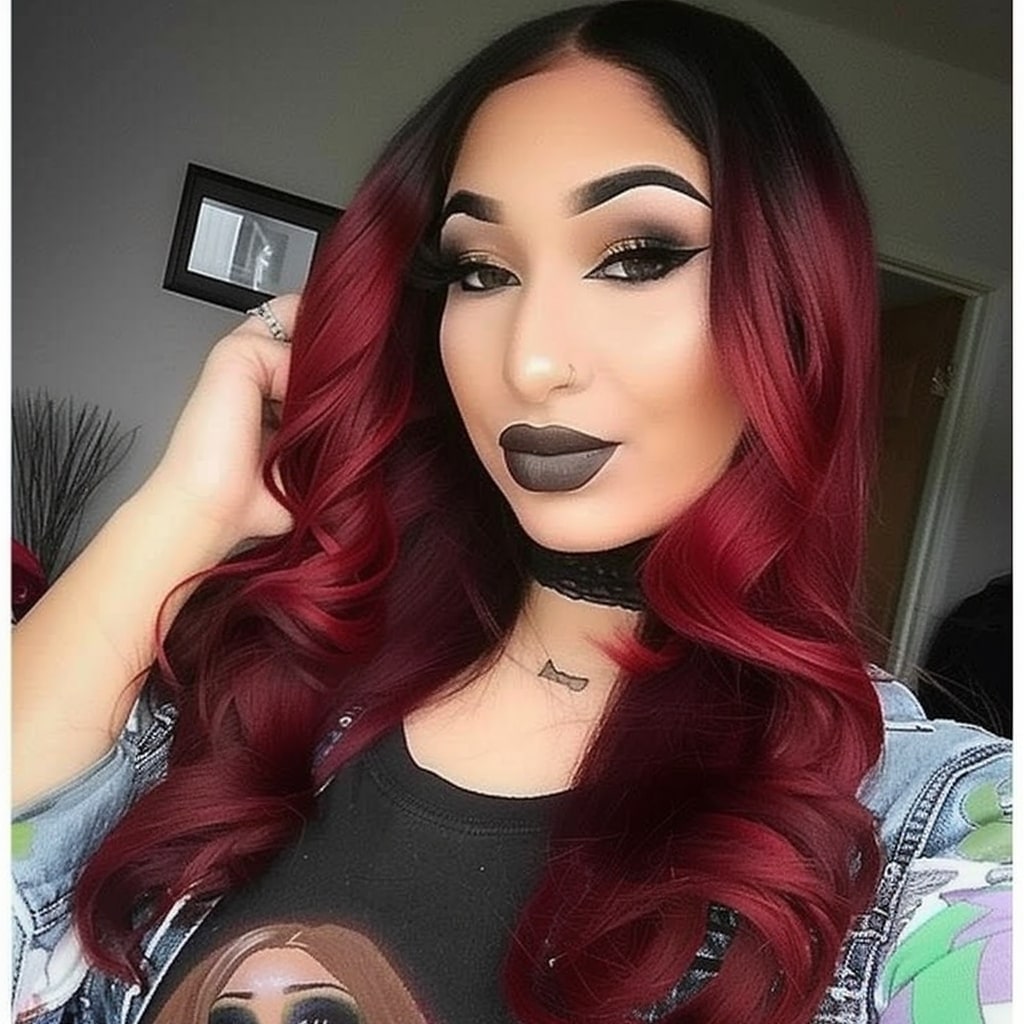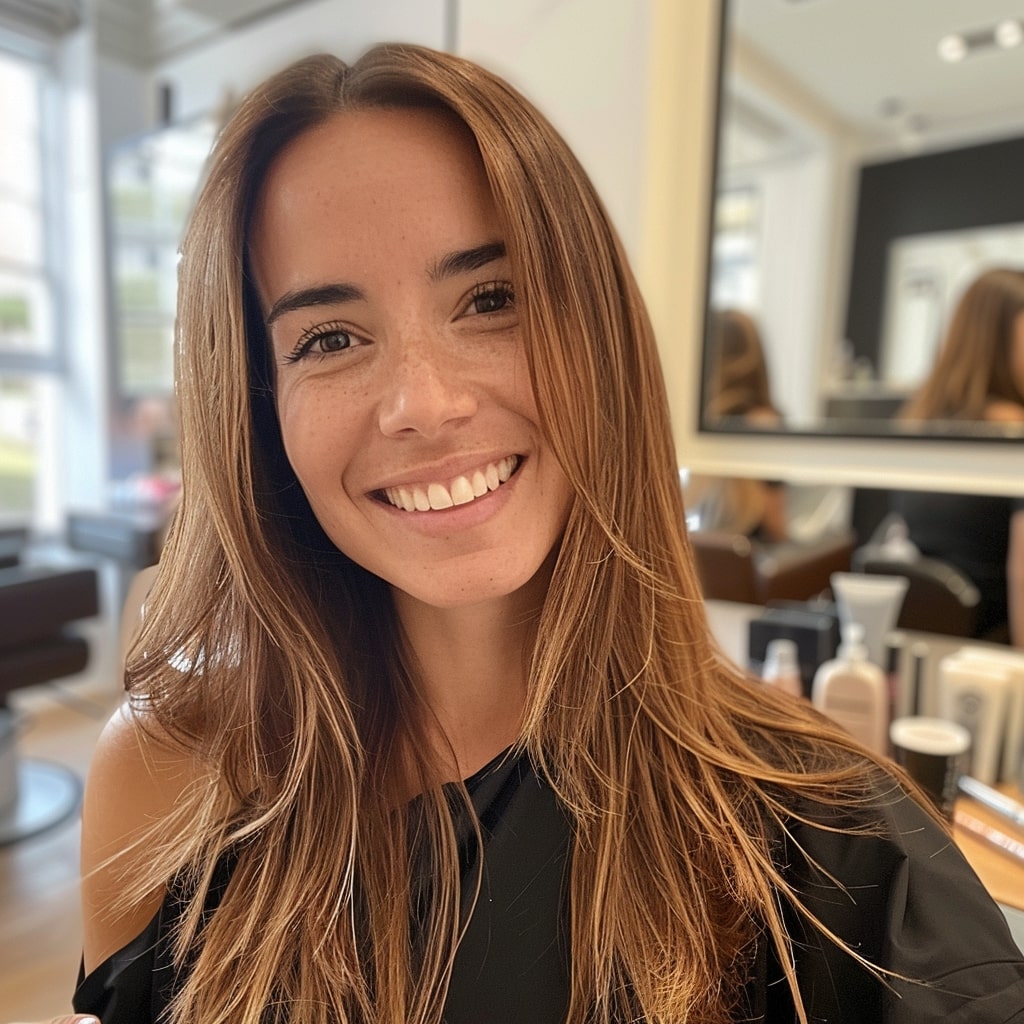Why Are My Hair Extensions Turning Orange? Understanding the Causes and Finding Solutions

Here’s a bullet-point list explaining possible reasons why your hair extensions may have turned orange:
-
Oxidation from Sun Exposure:
- Prolonged exposure to sunlight can cause hair extensions to oxidize, leading to an orange or brassy tint.
-
Mineral Buildup from Hard Water:
- Hard water contains minerals like iron and copper, which can deposit on hair extensions and cause them to develop an orange hue.
-
Use of High Heat Tools:
- Overuse of heat styling tools without proper protection can damage the extensions, altering the color and leading to an orange tint.
-
Chemical Reactions with Hair Products:
- Some hair products, especially those containing sulfates or parabens, can react with the dye in extensions, causing the color to fade or turn orange.
-
Incorrect or Overly Frequent Dyeing:
- If the extensions were dyed or toned incorrectly, or if dyeing is done too often, it can result in an undesirable orange tone.
-
Exposure to Chlorine:
- Swimming in chlorinated pools can cause chemical reactions that lead to a brassy or orange tint in hair extensions.
-
Improper Storage:
- Storing extensions in a place with fluctuating temperatures or direct sunlight can cause the color to change, potentially turning orange.
-
Product Build-Up:
- Excessive use of hair products like dry shampoo, leave-in conditioners, or oils can build up on extensions, leading to color changes, including an orange hue.
-
Failure to Use Purple or Blue Shampoo:
- Purple or blue shampoos are used to neutralize brassy tones. If not used regularly on blonde or light-colored extensions, the hair may start to turn orange.
-
Use of Low-Quality Extensions:
- Extensions made from lower-quality hair may have a tendency to turn orange more easily due to the materials or dyes used during production.
Blonde hair extensions turning orange can be frustrating, but understanding the reasons behind this change can help you restore their original beauty. Hair extensions often turn orange due to a chemical reaction similar to how natural blonde hair becomes brassy. Factors like exposure to chlorine, harsh sunlight, and product build-up can also contribute to this unwanted colour shift.
Another reason why hair extensions might turn orange is inferior hair quality. Many extensions are made from dark hair that has been chemically treated to achieve a blonde shade. When the silicone coating wears off or the toner fades, the underlying pigments can surface, leading to an orange hue. Maintaining the original colour of your extensions requires careful attention to the products you use and your overall hair care routine.
Protecting your blonde hair extensions from turning orange involves practical steps like avoiding frequent washing, using mild shampoos, and protecting your hair from chlorine and UV rays. By taking these precautions, you can keep your extensions looking vibrant and ensure they blend seamlessly with your natural hair.
Key Takeaways
- Chemical reactions often cause blonde extensions to turn orange.
- Inferior hair quality and fading toner can reveal underlying pigments.
- Proper care, including avoiding harsh elements, maintains the desired colour.
Understanding Hair Extension Discolouration
Hair extensions can change colour for a variety of reasons including chemical processes, environmental factors, and water quality. Knowing the causes can help you keep them looking vibrant and healthy.
Chemical Processes and Hair Damage
Hair extensions often go through extensive chemical treatment to achieve the desired colour. This includes bleaching and dyeing.
Chemically treated hair can be more prone to discolouration because the cuticle layer is stripped away. This can expose the underlying pigments, sometimes causing orange or pink tones. When the silicone coating from the manufacturing process washes off, the hair becomes more vulnerable to discolouration. Over-washing and using hot styling tools can accelerate this problem.
Impact of Environmental Factors
Environmental factors like sun exposure, chlorine, and saltwater can lead to hair discolouration.
Ultraviolet (UV) rays from the sun can break down hair pigments, making it turn brassy or even orange. Chlorine from swimming pools and sea salt can strip away protective layers of the hair, leading to the loss of violet or ash pigments. It's crucial to rinse hair immediately after swimming and use protective products to shield it from environmental damage.
The Role of Minerals and Water Quality
Minerals in water, particularly in hard water areas, can severely affect hair colour.
Hard water contains minerals like calcium and magnesium, which can build up in hair, causing it to appear dull and discoloured. Limescale deposits can also make it harder for hair products to work effectively. Using a filtered shower head or treatments like Malibu C Hard Water Treatment can help remove these minerals and keep hair extensions looking vibrant. Regular washing with a professional-grade, sulphate-free shampoo can also help maintain the quality of the extensions.
Preventing Orange Tones in Blonde Hair Extensions
Preventing orange tones in blonde hair extensions involves proper washing and maintenance, selecting the right hair care products, and using effective toning treatments and techniques.
Proper Washing and Maintenance
Blonde hair extensions need careful washing to avoid orange tones. Use sulfate-free shampoos to preserve the hair's natural oils and prevent dryness. Wash extensions separately in cool water, which helps maintain the colour.
Frequent washing can strip extensions of their colour. Aim to wash them no more than once a week. Always follow with a hydrating conditioner to keep the hair moisturized and healthy.
Avoid exposure to chlorine and hard water, as they can leave mineral deposits that cause orange tones. If this exposure is inevitable, consider using a clarifying shampoo once a month to remove any build-up.
Selecting the Right Hair Care Products
Choosing the right products is essential. Opt for blue or purple shampoos specifically designed for blonde hair. These products neutralize yellow and orange tones through their violet and ash pigments.
Select a lightweight conditioner that hydrates the hair without weighing it down. Avoid products with harsh chemicals that can strip colour or damage the extensions. Leave-in conditioners can provide added moisture and protection.
Be cautious with styling products. Alcohol-free and heat protectant sprays can prevent dryness and protect the hair from heat styling tools that may alter the colour.
Toning Treatments and Techniques
Regular toning treatments can help maintain the desired blonde hue. Use a purple toner once every few weeks to counteract any unwanted brassy tones.
For quick fixes, apply a leave-in toning spray which provides instant neutralization of orange tones. Follow the product instructions carefully to avoid over-toning, which can make the hair look dull.
Professional salon treatments like glosses and toners can offer more long-lasting results. These treatments use higher-quality products and expert techniques to refresh the colour of the extensions. Regular touch-ups at the salon are recommended for maintaining a bright, consistent blonde.
Impact of Sunlight and UV Exposure on Hair Extensions

Sunlight and UV exposure can significantly affect the colour and health of hair extensions. It's important to understand how these factors cause changes and what steps can be taken to protect the hair.
Protection from Sun Damage
Prolonged exposure to UV rays can lead to discolouration and damage to hair extensions. Wearing a hat or scarf provides physical barriers that shield the hair from direct sunlight. Additionally, using hair products that contain UV filters—such as butyl methoxydibenzoylmethane (avobenzone) and octocrylene—can add a layer of chemical protection.
These ingredients help block harmful rays that can cause pigments to fade and extensions to become brittle. For someone spending extended time outdoors, limiting sun exposure during peak hours (10 a.m. to 4 p.m.) is another effective strategy.
Understanding UV Impact on Dyed and Natural Hair
UV damage affects both dyed and natural human hair extensions. In dyed hair, the pigments are more vulnerable to oxidation, a chemical reaction accelerated by UV light, leading to unwanted colour changes such as turning orange.
Natural hair extensions can also suffer from lightening and increased brittleness. Products with UV protection can inhibit this process and reduce the risk of damage. It's essential to choose extensions treated with UV protectants, especially if the hair is light-coloured, as it is more prone to discolouration.
Regularly applying UV-protective products and adopting habits that minimize sun exposure can help maintain the hair's vibrant colour and texture.
Effects of Swimming and Water Activities on Hair Extensions

Salt water and chlorine can have significant impacts on hair extensions. Proper care after swimming is essential to maintain their appearance and longevity.
Chlorine and Salt Water Interaction
Chlorine in pools and salt from the ocean can dry out hair extensions. Both of these elements strip away natural and added oils, leaving hair brittle and more susceptible to breakage. Chlorine can also cause discolouration, leading to an orange or brassy tint, especially in lighter hair extensions.
Salt water has similar drying effects. The salt crystals can form deposits on the hair, making it feel dry and coarse. If ignored, both salt and chlorine exposure can result in tangling and matting, making hair extensions difficult to manage.
Hair Care Post-Swimming
After swimming, it's crucial to rinse hair extensions with fresh water immediately. This helps wash away any residual chlorine or salt. Following this, apply a leave-in conditioner to provide a protective barrier and restore moisture. Conditioning is key to preventing the drying effects of chlorine and salt water.
Detangle extensions gently using a wide-tooth comb or a soft-bristle brush. Start from the ends and work upwards to avoid creating knots. Air-drying the extensions is preferable to using heat, which can cause further damage. Regular maintenance will help keep hair extensions looking vibrant and healthy, even after swimming activities.
Colour Changes Due to Product Build-up and Incorrect Usage

Hair extensions can change colour due to a build-up of products and the incorrect usage of various hair care items. It's essential to understand how certain chemicals and misused products impact the pigment of your extensions, leading to unwanted shades.
Identifying Harsh Chemicals in Hair Care Products
Many hair care products contain chemicals that can cause significant damage to hair extensions. Ingredients like sulphates, parabens, and silicones can strip away the natural pigment of the hair, resulting in discolouration. For instance, frequent use of dry shampoos and styling gels can leave behind residues that create a yellow or orange appearance.
Additionally, the abuse of heat protectants and leave-in conditioners can lead to an oily build-up. This build-up affects your hair extensions differently than your natural hair, often making the extensions appear dull and lifeless. Hair that has been chemically treated, such as platinum blonde or violet pigments, is especially prone to colour changes from these harsh chemicals.
The Misuse of Hair Dyes and Tanning Products
Using hair dyes incorrectly can severely impact the colour of hair extensions. Re-bleaching extensions without consulting a professional can cause the natural and underlying pigments, like red and warm tones, to become overly prominent, turning hair extensions orange. It's crucial to have a hairdresser touch up extensions because their expertise in handling human hair is vital.
Spray tans and other tanning products can also lead to unwanted colour changes. When your hair comes into contact with these products, they can leave an orange residue, especially on lighter extensions. Always ensure that your extensions are adequately protected or removed during such treatments to avoid this issue. Proper maintenance and careful product usage can prevent these colour mishaps.
Cultural and Geographical Influences on Hair Extension Care
Cultural practices and geographical factors can significantly affect how hair extensions are cared for and maintained. Both the source of the hair and regional water and climate play crucial roles.
Effects of Region-Specific Water and Climate
Water quality and climate can greatly impact the longevity and appearance of hair extensions. Hard water, which contains high levels of minerals like calcium and magnesium, can be found in areas such as Russia and India. These minerals can cause hair extensions, especially those made from human hair, to become dry and discoloured.
Regions with high humidity can result in hair becoming frizzy or losing its shape. In contrast, dry climates can make extensions more prone to brittleness and breakage. Knowing the local water type and climate helps in choosing appropriate hair care products. For example, using a water filter can prevent mineral build-up from hard water, while using anti-humidity sprays can protect hair in moist climates.
Hair Extension Sources and Regional Differences
The origin of hair extensions affects their care requirements. Extensions sourced from India and Russia are particularly notable. Indian hair is often dark brown and naturally wavy, requiring specific shampoos and conditioners to maintain its texture and prevent orange tints. Russian hair, known for its fine and silky texture, needs moisture-rich products to keep it smooth and shiny.
Human hair extensions from different regions not only have varying textures but also differing strengths and weaknesses. Understanding these differences and tailoring care routines accordingly can make a significant difference in maintaining the quality and colour of the extensions. For instance, Indian hair may become more susceptible to dryness and colour changes if not kept properly hydrated and protected from mineral-heavy water.
Best Practices for Long-Term Care of Hair Extensions
Proper care of hair extensions involves consistent maintenance routines, professional advice, and lifestyle adjustments to preserve the health and appearance of both your natural hair and the extensions.
Routine Maintenance and Professional Advice
Regular maintenance is vital for keeping hair extensions looking their best. Brush your extensions daily using a soft-bristled brush to prevent tangles and reduce the risk of clumping. Always brush from the tips upward to avoid damaging the hair.
Washing and conditioning are essential. Use a sulphate-free shampoo and a moisturizing conditioner. Avoid washing the hair too frequently – once a week is often enough. Air-drying the extensions after washing can help maintain their integrity and prolong their life.
Scheduling regular appointments with a professional is recommended. Professional stylists can provide proper refits and ensure that the adhesives or bonds are still secure. They can also trim the extensions to prevent split ends and maintain their natural look.
Lifestyle Adjustments to Maintain Hair Health
Making some lifestyle changes can greatly benefit the longevity of your hair extensions. When sleeping, tie your hair in a loose ponytail or braid and avoid sleeping with wet extensions to reduce breakage and matting.
Protection from environmental factors is key. Wear a hat or scarf to shield your extensions from the sun, as UV rays can affect the colour and dryness of the extensions. Likewise, limit the use of heat styling tools, as they can dehydrate the hair and cause damage.
Keep your extensions moisturized. Apply a light layer of natural oils like argan or coconut oil to the tips of the extensions to keep them hydrated and prevent them from becoming brittle. Avoid applying oils close to the roots, as it can weaken the bonds or adhesives.
Frequently Asked Questions
This section addresses common concerns about why hair extensions may turn orange and provides practical solutions to prevent and fix this discolouration.
How can I correct blonde hair extensions that have turned orange?
To correct orange tones in blonde hair extensions, use a purple shampoo to neutralize the brassiness. Additionally, using a toner or seeking professional help can restore the desired colour.
What are the causes behind my hair extensions developing an orange tint?
Hair extensions can turn orange due to chlorine in pool water, mineral deposits from hard water, and chemical reactions with sunscreen. These factors strip the colour and cause discolouration.
How do I prevent my hair extensions from turning orange?
To prevent your hair extensions from turning orange, avoid frequent washing, use a mild shampoo and conditioner, limit heat styling, wear a swim cap in chlorinated water, and rinse hair immediately after swimming.
What should I do if my hair extensions become discoloured?
If your hair extensions become discoloured, use a clarifying shampoo to remove buildup. Follow up with a deep conditioning treatment and consider using a toner to restore the original shade.
Why have my hair extensions changed colour after exposure to the sun?
Sun exposure can lighten hair extensions and cause brassiness due to UV rays. Using hair-safe sunscreen and wearing hats or scarves can help protect the extensions from sun damage.
Is there a way to remove the brassy tones from my hair extensions?
To remove brassy tones, use a purple shampoo designed for blonde or highlighted extensions. For severe cases, applying a toner specifically formulated for your hair type can effectively eliminate unwanted orange hues.

 My Store Credit
My Store Credit
 Buy Again
Buy Again
